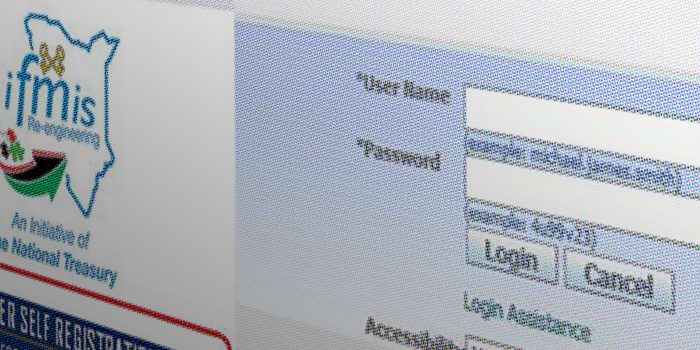How ‘Force Account’ is used as a Procurement Method
Getting work done by a public entity or semi-autonomous government agency using its own personnel & equipment (or hired labour).

According to public procurement regulations, Force Account means construction by the procuring entity itself or use of public or semi-public agencies or departments concerned, where a procuring entity or the public or semi-public agency uses its own personnel and equipment or hired labour.
Here’s what the Procurement Laws say about Force Account
The use of Force Account as a procurement method is governed by Sections 109 of the Public Procurement and Asset Disposal Act Revised Edition 2016 as outlined below:
Section 109.
- A procuring entity may use force account by making recourse to the state or public officers and using public assets, equipment and labour.
- A procuring entity may use force account by making recourse to the state or public officers and using public assets, equipment and labour which are competitive and where:
- quantities of work involved are small and scattered or in remote locations for which qualified construction firms are unlikely to tender at reasonable price and the quantities of works cannot be defined in advance;
- unforeseen and urgent work is required to be carried out without disrupting on-going operations;
- the procuring entity is to complete works delayed by the contractor after the written warnings did not yield any tangible results.
- This method shall only be applied:
- with the prior approval of the accounting officer;
- within the limit prescribed in Regulations;
- where the total cost of procuring the goods, works and non-consultancy services are, at most, set at the prevailing market rate.
- The procedure to use Force Account shall be as prescribed in the Regulations.
For each of the aforementioned situations under Section 109 (2) of the Act, the below are the procedures to be adhered to as prescribed by the 2020 Regulations:
95. Where a procuring entity uses force account under section 109(2)(a) of the Act, the procedure shall be as follows:
-
- a procuring entity shall identify and include the activity in the annual procurement plan;
- an accounting officer shall approve the procedure for use of force account based on the report which shall include an assessment and availability of a state officer’s or public officer’s capacity including public assets, equipment and labour;
- preparation of relevant bills of quantities, cost estimates and technical drawings, where applicable;
- the procurement of the materials or services to be used as inputs under force account method shall be in accordance with the provisions of the Act and these Regulations
- a procuring entity shall satisfy itself that it is uneconomical to outsource the goods or works or services; and
- a procuring entity shall establish that the cost of the items to be procured are at prevailing indicative market prices obtained through a market survey.
96. Where a procuring entity uses force account under section 109(2)(b) of the Act, the procedure shall be as follows:
-
- first establish that the work or service is urgent and may be carried out without any interruptions on ongoing operations using available state or public officers skills, equipment, materials and labour;
- seek approval from the accounting officer;
- ensure that the approval sought under paragraph (b) is supported by a report which shall include an assessment and availability of a state’s or public officer’s capacity including public assets, equipment and labour;
- prepare relevant bills of quantities, cost estimates and technical drawings, where applicable; and
- ensure that the procurement of the materials or services to be used as inputs is in accordance with the provisions of the Act and these Regulations.
97.
- Where a procuring entity uses force account under section 109(2)(b) of the Act, the procedure shall be as follows:
- seek approval from the accounting officer;
- ensure that the approval sought under paragraph (a) is supported by a report which shall include an assessment and availability of a state’s or public officer’s capacity including public assets, equipment and labour;
- prepare relevant bills of quantities, cost estimates and technical drawings, where applicable; and (d) ensure that the procurement of the materials or services to be used as inputs is in accordance with the provisions of the Act and these Regulations.
- A procuring entity may use Force Account to complete the works where the contractors either abandoned or delayed completion of works or services and the cost of re-tendering is uneconomical.
- Where force account is used, pursuant to section 109(2)(c), a procuring entity shall terminate the existing contract in accordance with section 153 of the Act
The Maximum Level of Expenditure for Force Account
Guided by the Second Schedule of the Public Procurement and Assets Disposal Regulations (2020), where the procurement method is Force Account procurement method, the threshold matrix is provided as follows:
| Procurement Method – Force account (section 109 of the Act) | ||
| Goods | Works | Services |
| Maximum level of expenditure shall be determined by the funds allocated in the budget for the particular procurement provided the conditions under this section are met. | Maximum level of expenditure shall be determined by the funds allocated in the budget for the particular procurement provided the conditions under this section are met. | Maximum level of expenditure shall be determined by the funds allocated in the budget for the particular procurement provided the conditions under this section are met. |
| No minimum | No minimum | No minimum |
Force Accounts are an internal affair, more or less…
Force Account is considered a more efficient method of procurement where the amounts of work involved are small and scattered or in remote locations for which qualified construction firms are unlikely to tender at reasonable price and the quantities of works cannot be defined in advance.
It may also be utilized where unforeseen and urgent work is required to be carried out without disrupting ongoing operations or where the public entity has to complete works delayed by a contractor who has failed to respond to written warnings for completion of the works.
This article is part of the Procurement Methods blog series.







